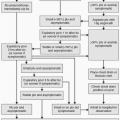Varicocele Embolization
Eric H. Reiner
Lindsay Machan
Jeffrey S. Pollak
A varicocele is a collection of varicose veins within the pampiniform (spermatic venous) plexus secondary to reflux in the internal spermatic vein (ISV). The condition affects 10% to 15% of the general population; however, they are detected in as many as 30% to 40% of men undergoing infertility workup. Depending on the method used for diagnosis, they are reported as being bilateral in 17% to 77% of men (1,2). Isolated right varicoceles are rare and should initiate cross-sectional imaging to exclude renal or retroperitoneal tumor, or situs inversus. Diagnosis was traditionally made by clinical examination; however, as for other venous reflux disorders, ultrasound has become the mainstay of diagnosis (3).
The proof that varicocele repair improves infertility remains elusive; however, there is general acceptance that treatment does improve abnormalities of semen production: by the traditional measures of decreased sperm motility, abnormal morphology, and decreased sperm count and by newer means of assessment including seminal reactive oxygen species, DNA fragmentation index, and abnormal sperm chromatin condensation (4,5). Although the connection between varicoceles and infertility remains controversial, associations with chronic groin pain and testicular atrophy in adolescent varicoceles are not.
1. Chronic groin pain (other etiologies excluded)
2. Infertility and appropriate semen abnormalities
3. Recurrent varicocele after surgical repair
4. Testicular atrophy in a pediatric patient
Contraindications
1. Severe coagulopathy
2. Demonstrated severe prior contrast reaction
Preprocedure Preparation
1. These are outpatient procedures.
2. Standard preangiography workup and preparation
3. Scrotal ultrasound. Universally accepted diagnostic criteria have not been established. Abnormal reflux with Valsalva maneuver rather than rigid size criteria are increasingly used as venous diameter varies significantly with hydration, anxiety, and inspiratory effort.
Procedure
1. Direct x-ray/fluoroscopic imaging of the scrotum should be avoided. Almost the entire procedure is performed using spot films and “fluoro capture.” Pulsed fluoroscopy should be used to further minimize radiation exposure. Testicular shielding is seldom used.
2. Right common femoral vein, right internal jugular vein, or antecubital vein access can be used. The internal jugular vein allows the most direct route to the right spermatic vein.
3. Catheters
a. Femoral approach
(1) Left varicocele: A 7 Fr. gonadal catheter (Cordis Corporation, Miami Lakes, FL) is used to coaxially introduce a 4 Fr. or 5 Fr. glide Berenstein catheter. If needed, a 3 Fr. microcatheter may be used to manipulate across difficult valves and/or tortuous collateral vessels.
(2) Right varicocele: A reverse curve catheter such as a Simmons 1 (“Sidewinder”—shepherd’s crook) catheter is helpful for selecting the right ISV.
b. Right internal jugular or axillary vein: Multipurpose catheters can be used to select the right and the left spermatic veins, usually without the need for coaxial catheters or catheter exchange.
4. The catheter is passed into the left renal vein to select the ostium of the left ISV (Fig. 42.1). A gentle injection of contrast may be needed, while the patient performs a Valsalva maneuver, to ensure seating of the catheter tip in the ISV and for identifying reflux through incompetent valves. If access is from the femoral route, a 4 Fr. or 5 Fr. glide Berenstein catheter can be coaxially advanced down the ISV, gently injecting contrast. If there are incompetent valves, contrast should fill in a retrograde fashion, down the ISV, toward the testis, especially during a Valsalva maneuver. Collaterals that originate from the renal hilum or paralumbar region may be noted. A tilt table may be of additional benefit, if the patient is unable to perform an adequate, sustained Valsalva maneuver. When using a right jugular vein approach, the ostium is accessed, and with the assistance of an angle-tipped glidewire, the catheter is directed into the proximal left ISV.
5. Measure the size of the vein and note the position of all collateral channels, including parallel, colic, hilar, and capsular pathways.
6. Particular care should be taken to avoid vessel spasm, which hinders the ability to proceed with the procedure and obscures collaterals—predisposing to a false impression of successful occlusion.
7. Methods of embolization. Several have been described, each with its own merits. Current literature remains nonstandardized; the use of liquid embolics with or without metallic coils has become the most common practice (6,9).
a. Metallic coils and sodium tetradecyl sulfate (STS): The 0.035-in. or 0.038-in. metallic coils are deployed within the lower ISV




Stay updated, free articles. Join our Telegram channel

Full access? Get Clinical Tree






